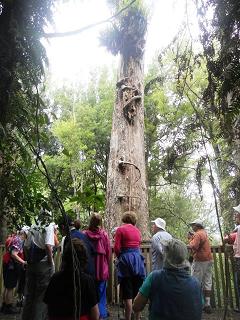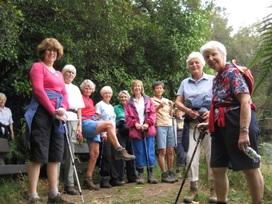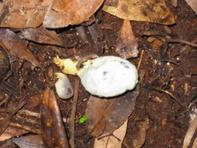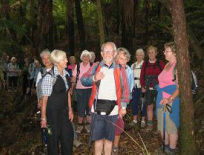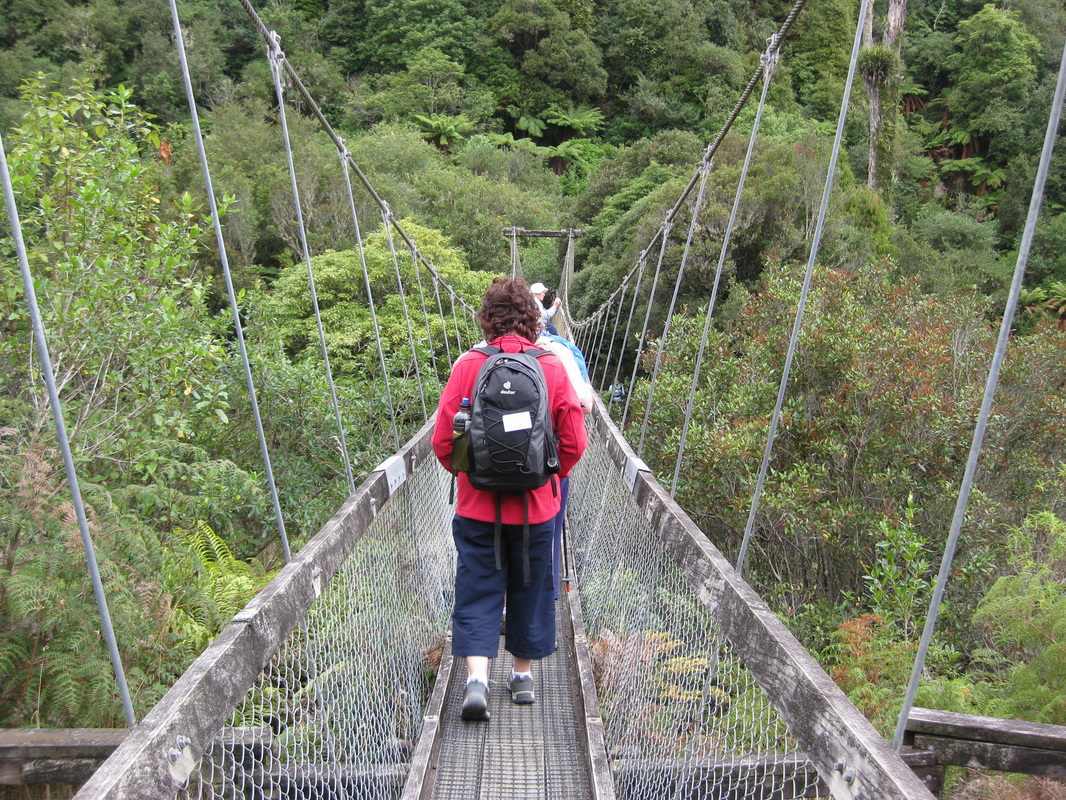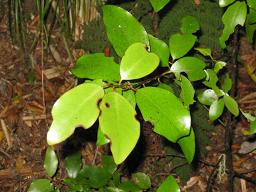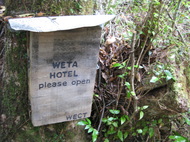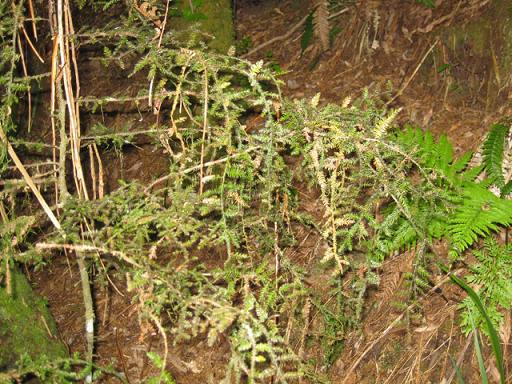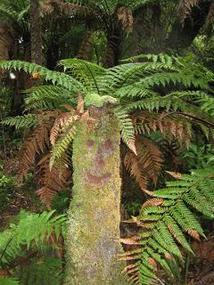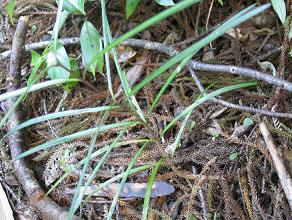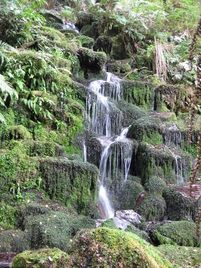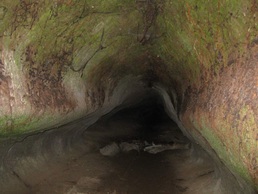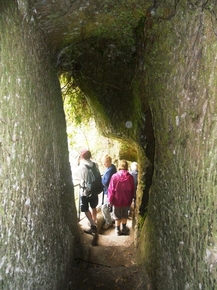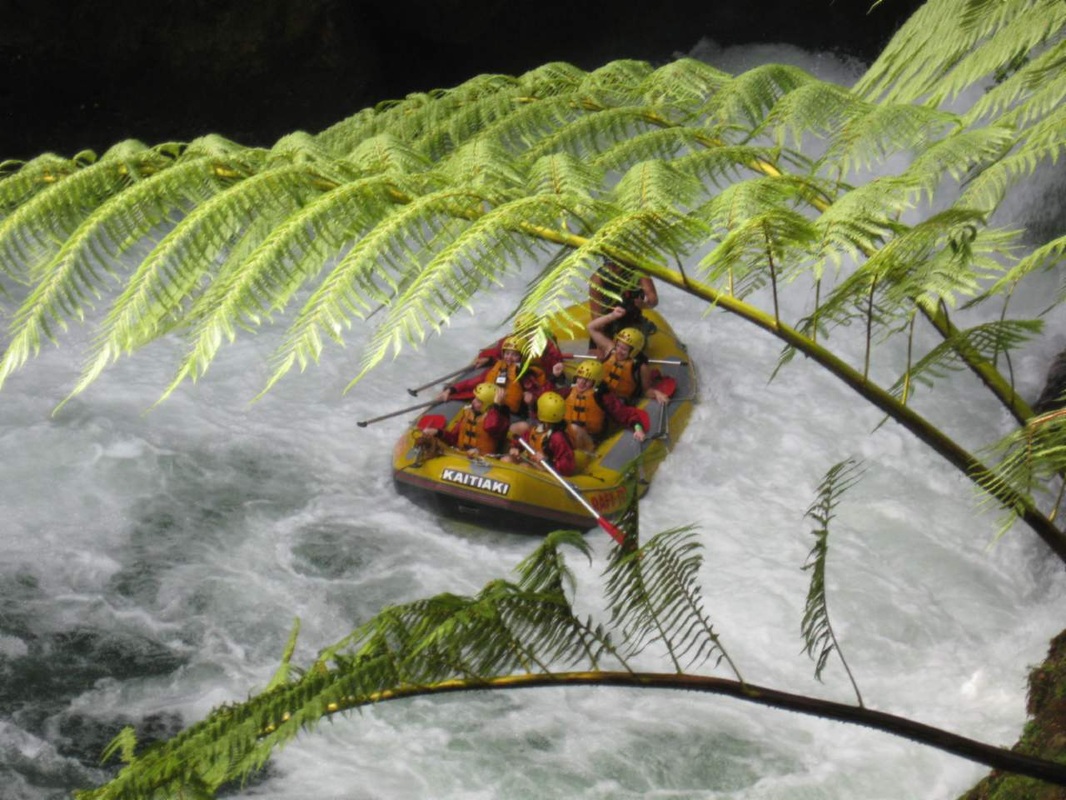Trip Report - Easter Weekend 2013
|
We did a short bush walk in Rotorua, where we marvelled at the biggest rata (Metrosideros robusta) in the region, a massive giant festooned with epiphytes. A metal band some way up the trunk signalled the need for protection from possums!
Also while in Rotorua we had a chance to wander the area surrounding Government Gardens, enjoying the sunshine, the therapeutic sulphur smell and watching masses of the New Zealand scaup (black teal) on the lake. Scaup can dive to over three metres underwater to feed from the lakebed. Back on the bus and on to our accommodation near Whakatane - time to check out the great thermally heated pools and choose a good spot for happy hour! Our driver took us the long way to Whakatane for dinner, sight-seeing along the way. A full day, we slept well! |
Saturday 30 MarchA long, mildly hair-raising drive through the spectacular Waioeka Gorge to remote Motu Falls was absolutely worth it for the "botanizing" we were able to indulge in that day! We had never seen such a profusion of wheki pongas anywhere and had a good chance to study the spongy nature of the fat trunks partly draped over with dried leaves (skirts to some of us!)
Then there were miro, matai and rimu, many mature trees as well as some very young miro and matai. Among the more unusual plants we found were kaikomako (young leaves in the shape of a duck's foot), green horopito (Pseudowintera axillaris), putaputaweta (marbled, small leaf) and wineberry, which looks somewhat similar to lacebark. |
Finally we identified three types of Metrosideros: M. microphylla, M. diffusa and M. robusta. |
Sunday 31 MarchEaster Sunday was an even bigger day for the botanists among us. We travelled to the Whirinaki Forest and set out on a very well-maintained four hour loop track. We immediately had a sense that this was a very special place and felt very small surrounded by giant trees, mosses and lush ferns with sunlight filtering through the canopy. It was a gradual climb through podocarp forest, then mixed hardwood and beech until beech was predominant. This was native mountain beech, which, like red beech, loses its leaves throughout the year.
Among the podocarps were rimu, montane totara, matai, miro and kahikatea. The hardwoods included tawa, kamahi,hinau, white maire,black maire, rewarewa, etc. While matai and miro look very similar as seedlings, matai seems to become a more straggly plant as it grows and, after some years, its branches have a tangled look about them.
|
Seeing miro, matai and maire in the early stages, before they grow to be some of the most attractive trees in the bush, was a special treat. For the bird lovers amongst us the highlight of the day was a close encounter with a North Island robin who hopped down onto the track in front of us and seemed to know we were friends! |
Along the way, there were ferns galore! Blechnum novae zelandiae, thread fern, creeping fern and kidney fern to name a few. We noticed that the lowest leaflets on the B. novae zelandiae were small and rounded, whereas higher up, they were elongated in shape. Whirinaki has been called the "dinosaur forest" and it's not hard to see why, with the age of the trees and its totally unspoilt nature. Many of us felt it was the most stunning native forest we had ever experienced and we would never forget this day. On our way back to Whakatane we stopped to stroll over the Matahina Hydro Dam, and (on request) received a very enlightening lesson from our own electrical engineer, Sue, on how electricity is made. |
|
Monday 1 April
The drive back to Auckland was broken by a welcome stop at lovely Okere Falls and the excitement of the day was seeing three groups of white water rafters come crashing and screaming down the falls as we were climbing back up from investigating a cave beside the river. Special thanks to Des and John, and other club members who helped, for making this a truly wonderful weekend. |
